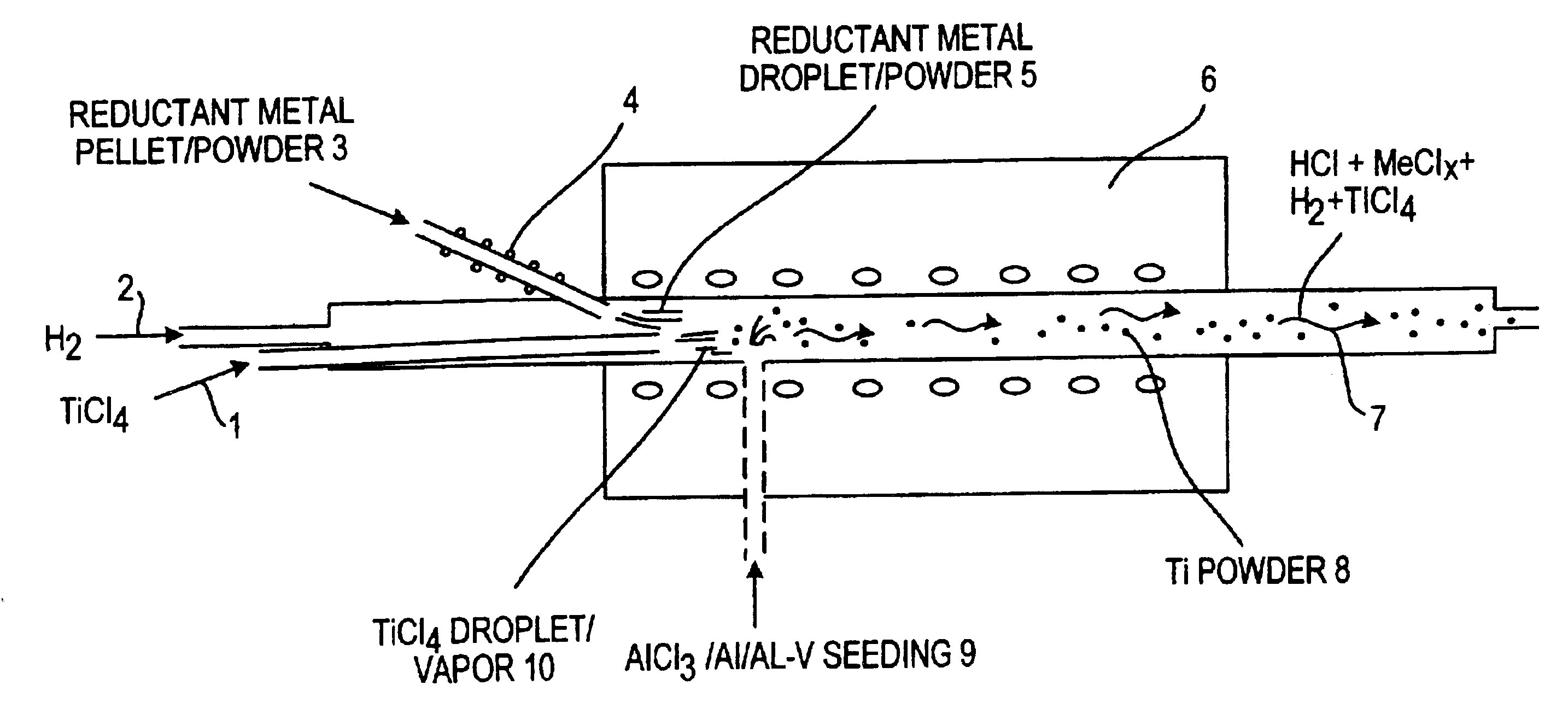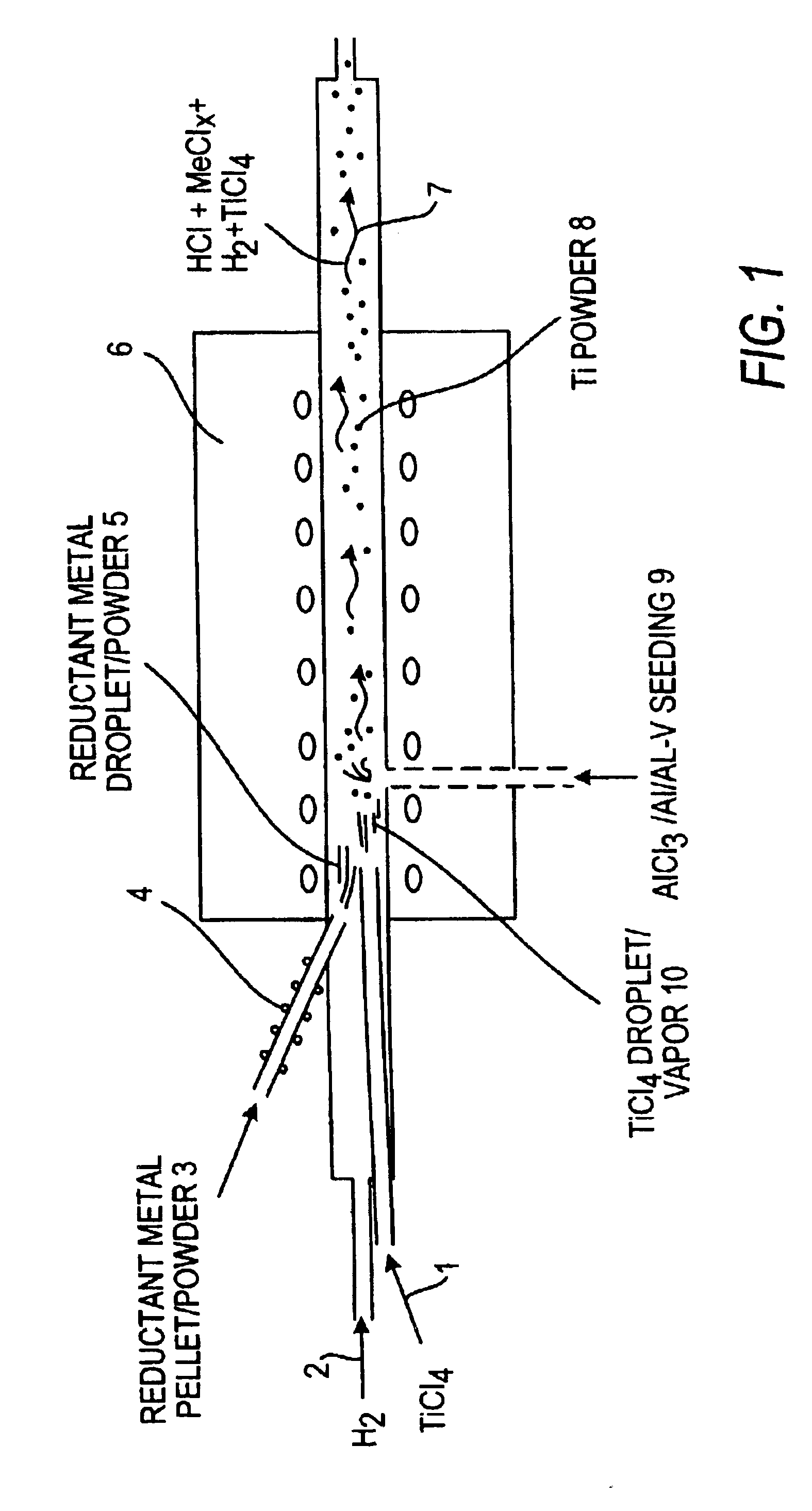Method of making elemental materials and alloys
a technology applied in the field of production of elemental materials and alloys, can solve the problems of significant heat generation, and achieve the effect of reducing the environmental impact of the process
- Summary
- Abstract
- Description
- Claims
- Application Information
AI Technical Summary
Benefits of technology
Problems solved by technology
Method used
Image
Examples
example 1
[0088]1 g of Mg powder, (Alfa Aesar, −325 mesh (4 reduction by H2. The experiment was carried out by the procedures described above at the temperature of 600° C. for 30 min then at 700° C. for 20 min.
[0089]After the experiment, the color of the 2-mm surface powders in the crucible changed from original gray to black, and their particle sizes changed to 0.5-2 mm. Most of the powders in the bottom of the crucible still retained their original color and size of the Mg powder, while some particles with metallic shining color and sub-millimeter size existed among them, which could be seen by naked eyes. Many particles in the diameters of sub millimeters with black or metallic shining colors were found in the downstream reaction tube and the Sampling Vessel. The samples were separately collected from the crucible and the Sampling Vessel and analyzed by scanning electron microscopy coupled with energy dispersive X-ray (SEM-EDX) and X-ray diffraction spectroscopy (XRD).
[0090]SEM-EDX detecte...
example 2
[0091]A control experiment was carried out to confirm the function of and the route through the reducing gas, for example, H2, for the present invention. The experiment was conducted in the same way as example 1 except that Ar substituted H2 (no H2 was used at all). After the experiment, no particle was found in the Sampling Vessel and downstream tubes, which was different from the result of example 1, where a certain amount of the particles were founded from the Sampling Vessel and the downstream tube. Therefore, as discussed above, the particles in the Sampling Vessel and the downstream tube in example 1 were produced via the TiCl4 reduction through H2.
example 3
[0092]The experimental condition used was the same as Example 1 except that the reaction was carried out at 900° C. for 30 min then at 1000° C. for 20 min. After the experiment, the color and size of all of the powders in the crucible were changed. In the crucible orientation, the color of all of the powders in the upstream half (about 35 mm long) of the crucible became black, while the color of the powders in the downstream half (˜35 mm long) of the crucible became white. Most of the powders in the crucible were in the size range of sub-millimeters to 2 millimeters. SEM-EDX detected the black powders contained about 75% of titanium and about 5% of Mg, and the white powders contained about 70% of Mg and 2% Ti. The black powder was metallic titanium, while the white powder was MgCl2. Similar to Example 1, SEM-EDX also indicated that the powders collected from the Sampling Vessel and the downstream tubes contained about 50% of titanium but no magnesium at all.
PUM
| Property | Measurement | Unit |
|---|---|---|
| Fraction | aaaaa | aaaaa |
| Time | aaaaa | aaaaa |
| Temperature | aaaaa | aaaaa |
Abstract
Description
Claims
Application Information
 Login to View More
Login to View More - R&D
- Intellectual Property
- Life Sciences
- Materials
- Tech Scout
- Unparalleled Data Quality
- Higher Quality Content
- 60% Fewer Hallucinations
Browse by: Latest US Patents, China's latest patents, Technical Efficacy Thesaurus, Application Domain, Technology Topic, Popular Technical Reports.
© 2025 PatSnap. All rights reserved.Legal|Privacy policy|Modern Slavery Act Transparency Statement|Sitemap|About US| Contact US: help@patsnap.com



